Cottagecore is an aesthetic that romanticizes simplistic, pretty, and quaint rural life. Individuals who adapt this aesthetic typically expand it to their lifestyles, valuing slow paces and creating for themselves. Cooking, gardening, and crafting are common, as well as heightened disconnection from social media and busy culture. Defining artistic aspects of cottagecore spaces include floral prints, bright colors, vibrant greenery, rustic wooden features or furniture, and different earthy stones, rocks, or crystals. Flowers and plants themselves typically scatter these cottagecore spaces, and elements are arranged in collage or mosaic fashions; the cottagecore aesthetic does not have harsh lines.
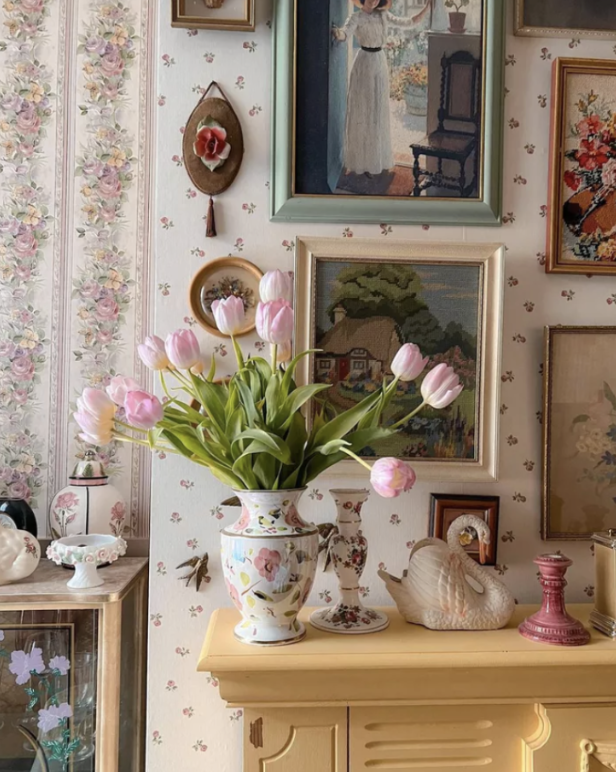
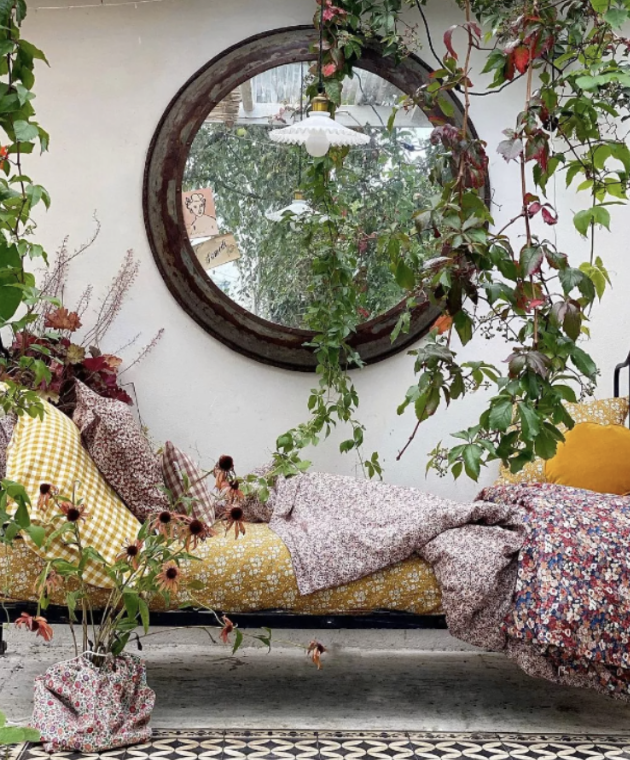
In the photos to the left from My Domaine(1) and SpaceWise(2), we can see that these rooms mimic the natural flow and spontaneity of nature outside. To compare this aesthetic to art history, the Impressionism style captures it most accurately. Art from painters such as Claude Monet are actually common in cottagecore environments. He often escaped to stunning natural landscapes to create his work. Overall, the impressionism style captures picturesque scenes through a blend of thin, visible brushstrokes, utilizing multiple color shades to produce natural light. The following image by Claude Monet(8) represents cottagecore’s pleasant, day-dream-like vision. The women seen in the photo even appear to be wearing clothing representative of this cottagecore aesthetic.
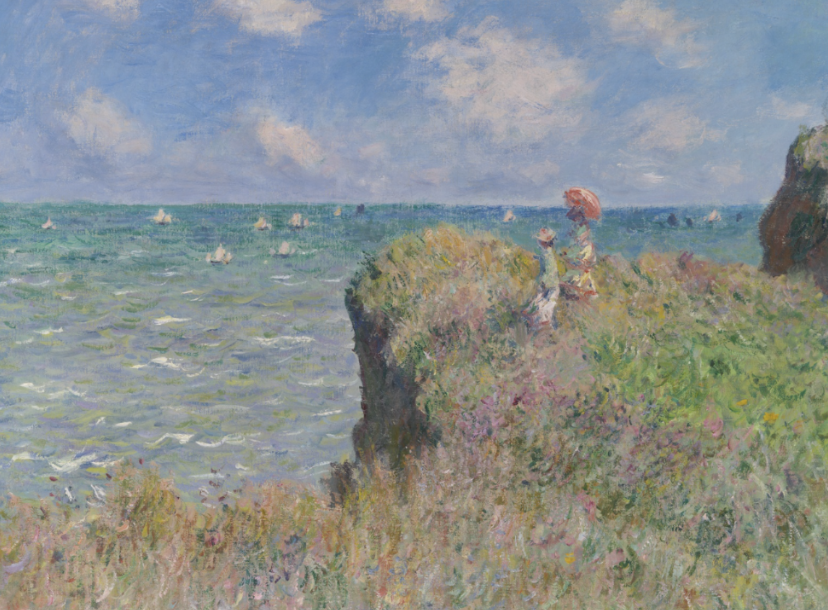
The cottagecore aesthetic encapsulates clothing, as well, where bright, dainty patterns and flowy fabrics are worn. The following crocheted bag and skirt by The Cottagecore clothing company(3) are examples of this aesthetic brought to fashion.
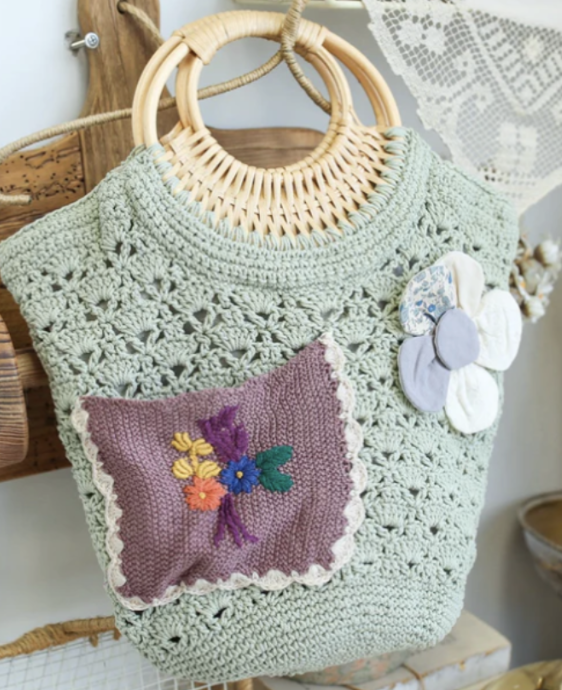
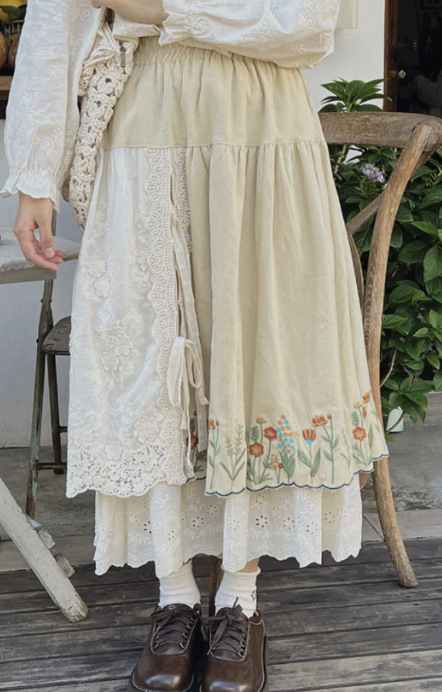
Regarding the historical timeline of this aesthetic, it is traced back 2,300 years when individuals in an ancient Grecian region called Arcadia began to create “escapist and aspirational paradise(s)” for themselves away from the polluted and “filthy” city of Alexandria(4). The following image by Fly Me to the Moon(5) showcases the landscape of Arcadia.
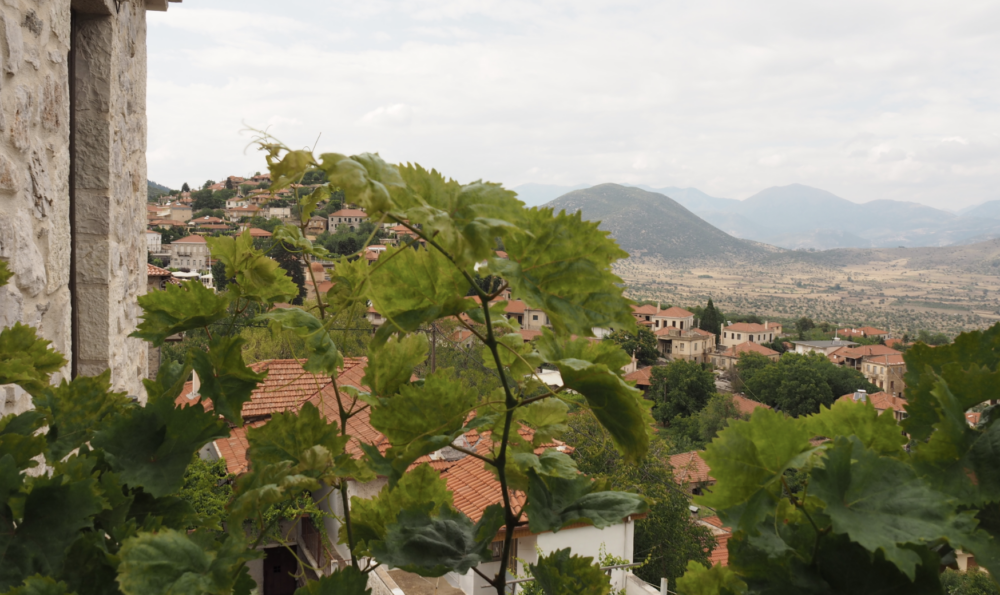
From this point forward in history, this aesthetic remained, inspiring countless pieces of art and many poets. It eventually transformed into a “vogue” trend during Elizabethan England, evident when the plots and moods of Shakespearian plays mirrored cottagecare aesthetic heavily(4). Marie Antionette, queen of France from 1774 to 1792, expanded the aesthetic further by displaying its characteristics in her fashion choices(4).
The image below from The Collector(6) of Marie Antionette highlights the delicate cottage core clothing, and the second photo is fabric taken from one of her gowns showcased in the The Metropolitan(7) museum.
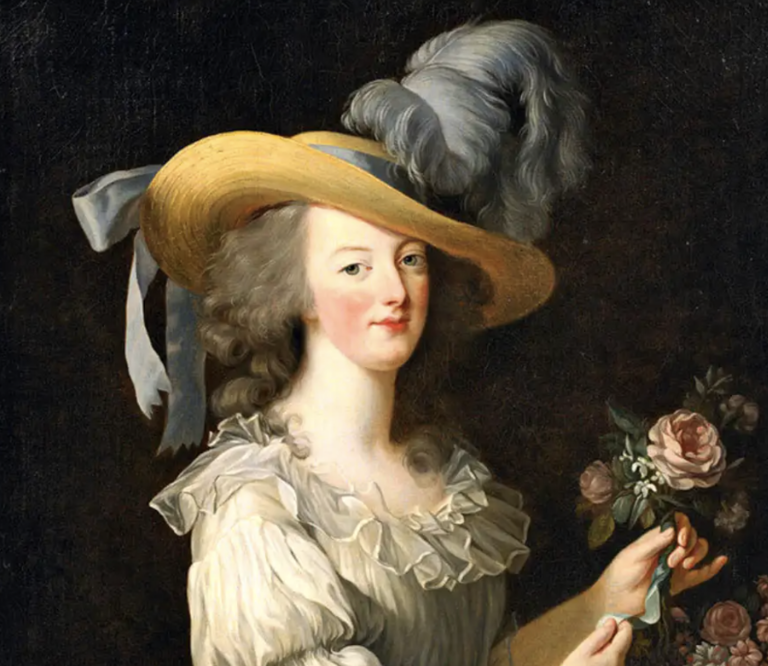 .
. 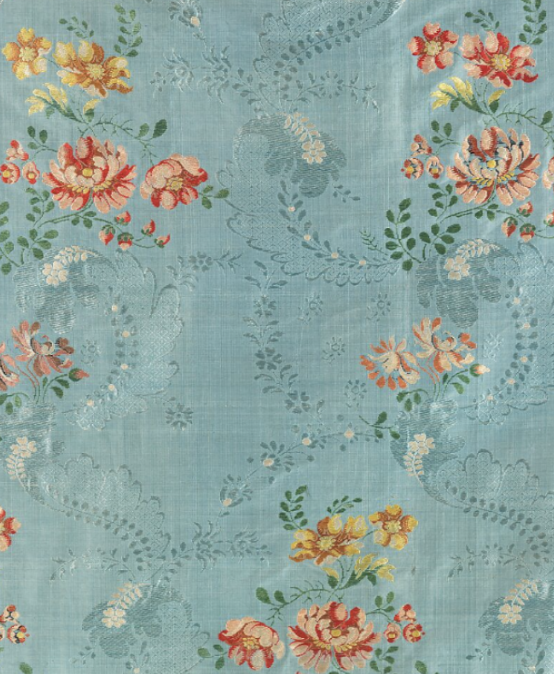
This aesthetic eventually got its name in 2010 through modern social media platforms.
Sources:
- MyDomaine, 2022, https://www.mydomaine.com/cottagecore-decor-ideas-5270411
- SpaceWise, 2023, https://www.extraspace.com/blog/home-organization/how-to-design-a-cottagecore-style-home/
- The Cottagecore, https://thecottagecore.com/collections/jewelry
- Angelica Frey, JSTOR, 2020, https://daily.jstor.org/cottagecore-debuted-2300-years-ago/
- Fly Me to the Moon, 2016, https://flymetothemoontravel.com/hidden-destination-spotlight-mythical-region-arcadia/
- Laure Nitschke, The Collector, 2021, https://www.thecollector.com/marie-antoinette-controversial-fashion-queen/
- The Met, 2020-2024, https://www.metmuseum.org/art/collection/search/159485
- Art Institvte Chicago, Cliff Walk at Pourville, Claude Monet, 1882, https://www.artic.edu/artworks/14620/cliff-walk-at-pourville

2 Comments. Leave new
Hello Sarah, your post initially caught my attention because I also chose to research the aesthetic Cottagecore. After reviewing your exploration and synthesis of the topic, I was still able to learn and follow your understanding of the aesthetic. Please tell us about your decision of your hierarchy of the organization of the post. I think you did a good job at formatting your entire post as well as the content within; it flowed seamlessly. I especially enjoyed reading about how this more Impressionism style transformed when it was introduced as a “vogue trend”. Overall your post was very informative and engaging, good job!
Thank you for taking the time to read my post! That is great how you also chose this aesthetic. I personally love implementing cottagecore elements into my life. I chose to organize this post in the following way: First, I thought it would be beneficial to describe the aesthetic’s defining qualities as a whole, including ways that spaces are filled and how individuals embody this aesthetic in their ways-of-life. Then, I wanted to extend my explanation to fashion, as clothing is a major aspect of cottagecore. From here, I felt it would be interesting to explore history and inspirations after readers, hopefully, had a feel for the aesthetic overall! Thank you, again!